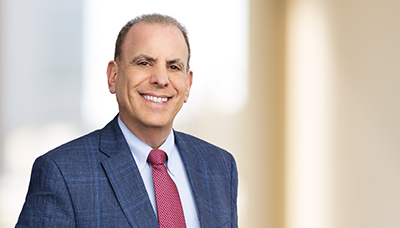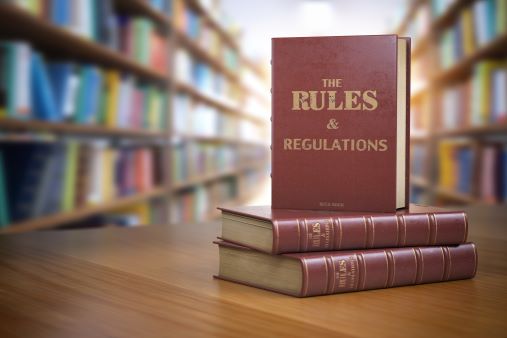On March 23, our labor and employment attorneys conducted a webinar with updates on COVID-19 employer issues, focusing on the recently passed Families First Coronavirus Response Act (FFCRA).
The next day, the Department of Labor (DOL) issued its first guidance on this new legislation in the form of employer and employee fact sheets, as well as a Frequently Asked Questions sheet. Then on March 25 and 26, the DOL issued a poster, along with Frequently Asked Questions regarding notice requirements. The DOL expects to issue implementing regulations in early April. Here are some common questions being asked by employers, some of which have been addressed in the new DOL guidance.
Employer: What is the effective date for the new legislation?
The new legislation will take effect on April 1, 2020. It is NOT retroactive.
Employer: Which employers are covered by the new legislation?
The new legislation only applies to employers with less than 500 employees.
Employer: From what point will the DOL determine if we fall over or under the 500 employee threshold?
The new leave requirements go into effect on April 1, and the DOL will determine whether or not you meet the 500 employee threshold at the time the employee requests the leave.
Employer: How will the DOL determine whether or not the 500 employee threshold is met with respect to corporations with parent-subsidiary relationships?
The DOL will use the “integrated employer” test, which is similar to the “single employer” test used under the National Labor Relations Act (NLRA) and other federal employment statutes. Briefly stated, the DOL and courts evaluate the following four factors: 1) common ownership, 2) common management, 3) centralized control of labor relations, and 4) interrelation of operations. This is a highly fact-intensive inquiry, but historically, centralized control of labor relations has been the most important factor. If an entity is found to be an integrated employer, all employees of the integrated employer are counted as “one” employer.
Employer: How much paid leave is provided for under the FFCRA?
There are two types of leave provided for under the FFCRA: 1) emergency paid sick leave and 2) extended paid child care leave under the Emergency Family and Medical Leave Expansion Act (EFMLEA) Eighty hours of emergency paid sick leave is available to an employee who is unable to work or telework because that employee:
- Has been advised by a healthcare provider to self-quarantine due to concerns related to COVID-19
- Is subject to a federal, state or local quarantine or isolation order related to COVID-19
- Is experiencing COVID-19 symptoms and seeking a medical diagnosis
- Is caring for an individual (not just family members) subject to a quarantine order, or who has been advised by a healthcare provider to self-quarantine
- Is caring for a son or daughter when the child’s school or place of care has closed, or the child’s child care provider is unavailable, “due to COVID-19 precautions” (a different standard than the “public health emergency declared by a Federal, State, or local health authority” for COVID-19 FMLA leave)
- Is experiencing any other “substantially similar condition” specified by the Secretary of Health and Human Services in consultation with the Secretary of the Treasury and the Secretary of Labor
Emergency paid sick leave is capped at $511 per day and $5,110 in the aggregate when used for the employee’s own well-being (a noted in numbers 1, 2, and 3), and $200 per day and $2,000 in the aggregate when used for family or child care (as noted in numbers 4, 5, and 6).
Extended paid child care leave expands the FMLA by authorizing eligible employees to take up to 12 weeks of job-protected “public health emergency leave” to care for a son or daughter under 18 years of age if the child’s school or place of care has closed, or the child’s child care provider is unavailable, as a result of a COVID-19 health emergency.
The first 10 days of EFMLEA leave are unpaid, but employees may use the 80 hours of paid sick leave provided under the FFCRA to cover the first 10 days or may elect to use any accrued paid time off (vacation, sick leave or other PTO). Given the different caps for paid sick leave taken for the employee’s own potential exposure to COVID-19 and/or quarantine or isolation, rather than for child care, depending on their regular rate of pay, some employees might choose to use other PTO and reserve their FFCRA paid sick leave in case they are later eligible for leave under categories 1, 2 and 3 above.
Following the 10 days of unpaid leave, an employee must be paid for the remainder of the extended paid sick leave that is not less than two-thirds of the employee’s regular rate of pay (as determined under the FLSA) multiplied by the number of hours the employee would otherwise normally be scheduled to work. The pay is capped at $200 per day and $10,000 in the aggregate.
Employers of healthcare providers and emergency responders may elect to exclude such employees from emergency paid sick leave requirements, and DOL has the authority to exclude such employees from those eligible for child care leave under the EFMLA.
Additionally, businesses with fewer than 50 employees are not required to provide child-care related paid sick leave or child care leave under the EFMLEA if doing so would jeopardize the viability of their business. DOL will address this issue in its forthcoming regulations.
Employer: What should we do if an employee was diagnosed at work with COVID-19?
- An employer should consider taking the following steps:
- Remain calm and communicate in a manner to avoid creating panic
- Notify coworkers who may have come into contact with the employee during the preceding 14 days that they may have been exposed to COVID-19 and may wish to see a healthcare provider. The employee should not be identified due to medical privacy issues.
- If employees have had close contact with the employee in the past 14 days, send them home for a 14-day self-quarantine
- Ask the employee to identify known customers, vendors or other third parties with whom they may have had contact during the preceding 14 days, and review employee’s work calendar, visitor logs or other resources to confirm the same
- Notify known customers, vendors or third parties with whom the employee may have come into contact at work within the past 14 days that they may have been exposed to COVID-19 and may wish to see a healthcare provider. Again, the employee should not be identified.
- Arrange for a professional cleaning and sanitizing of the employee’s workspace, immediate surrounding area and areas likely visited (break room, restroom, etc.)
- Respond to inquiries by the U.S. Centers for Disease Control and Prevention (CDC) or public health authorities as/if received. The employer is allowed to disclose identity of employee and protected health information to the CDC.
Employer: How do I identify whether or not my company is exempt from various “stay at home” orders issued by the states?
Most states appear to be following the Cybersecurity and Infrastructure Security Agency (CISA) Guidelines issued by the Department of Homeland Security. However, you should check the executive order in your state, as some states have more limited definitions.
Employer: Can I require my employees to report for work if my business is identified as a CISA critical infrastructure business?
Yes, however, the current situation remains very fluid, but this question raises an important employee relations issue given that some employees may now be hesitant to report to work.
Employers should act with empathy, reassuring the workforce that it understands their concerns and that it is taking all practical steps to protect employee safety. If an employee still expresses concerns about reporting for work despite these steps, we recommend the organization discuss with the employee their options for paid and unpaid leave during the current situation.
Employers should communicate these COVID-19 preparedness steps, reinforce social distancing (6 feet apart) on the work floor as practical, and consider implementing staggered shifts to assist with social distancing, as needed:
COVID-19 Preparedness
At this stage, all employers should take steps to mitigate the potential spread of COVID-19. Employers should educate and reassure employees and train them on what action to take to limit the potential spread of any virus, including COVID-19.
The CDC recommends the following to prevent the spread of the virus:
- Wash hands often with soap and water for at least 20 seconds, and if soap and water are not available, use an alcohol-based hand sanitizer
- Avoid touching eyes, nose, and mouth with unwashed hands
- Avoid close contact with people who are sick
- Stay home when sick
- Cover coughs or sneezes with tissues or cough into the elbow area, then discard the tissues in the trash and follow up with handwashing
- Clean and disinfect frequently touched objects and surfaces regularly.
As there is no present vaccine to prevent COVID-19, circulating these good hygiene practices to employees is the next best step for employers to stay proactive during the COVID-19 outbreak.
The purpose of social distancing is to delay the spread of COVID-19 so that local healthcare facilities are not overwhelmed with seriously ill patients (by flattening out the curve of the anticipated spike in recognized cases of COVID-19). Such measures include, for example, staggering work shifts, evaluating remote work options, limiting group meetings (use of video or telephonic conferencing), distancing workers at work as feasible (6 feet is the current recommendation), postponing any nonessential travel, and by training employees to avoid social gatherings at work that put them in close proximity.
For more information, please contact the Barnes & Thornburg attorney with whom you work, or Mark Keenan at 404-264-4044 or mark.keenan@btlaw.com, Patricia L. Ogden at 317-231-7712 or patricia.ogden@btlaw.com, Teresa L. Jakubowski at 202-371-6366 or teresa.jakubowski@btlaw.com, or Kathleen Anderson at 260-425-4657 or kathleen.anderson@btlaw.com.
You can also contact another member of the Labor and Employment Department:
Kenneth J. Yerkes, Chair
317-231-7513
John T.L. Koenig, Atlanta
404-264-4018
David B. Ritter, Chicago
312-214-4862
William A. Nolan, Columbus
614-628-1401
Mark S. Kittaka, Fort Wayne
260-425-4616
Frank T. Mamat, Detroit Metro
947-215-1320
Keith J. Brodie, Grand Rapids
616-742-3978
Peter A. Morse, Indianapolis
317-231-7794
Scott J. Witlin, Los Angeles
310-284-3777
Michael P. Palmer, South Bend and Elkhart
574-237-1139
© 2020 Barnes & Thornburg LLP. All Rights Reserved. This page, and all information on it, is proprietary and the property of Barnes & Thornburg LLP. It may not be reproduced, in any form, without the express written consent of Barnes & Thornburg LLP.
This Barnes & Thornburg LLP publication should not be construed as legal advice or legal opinion on any specific facts or circumstances. The contents are intended for general informational purposes only, and you are urged to consult your own lawyer on any specific legal questions you may have concerning your situation.


























